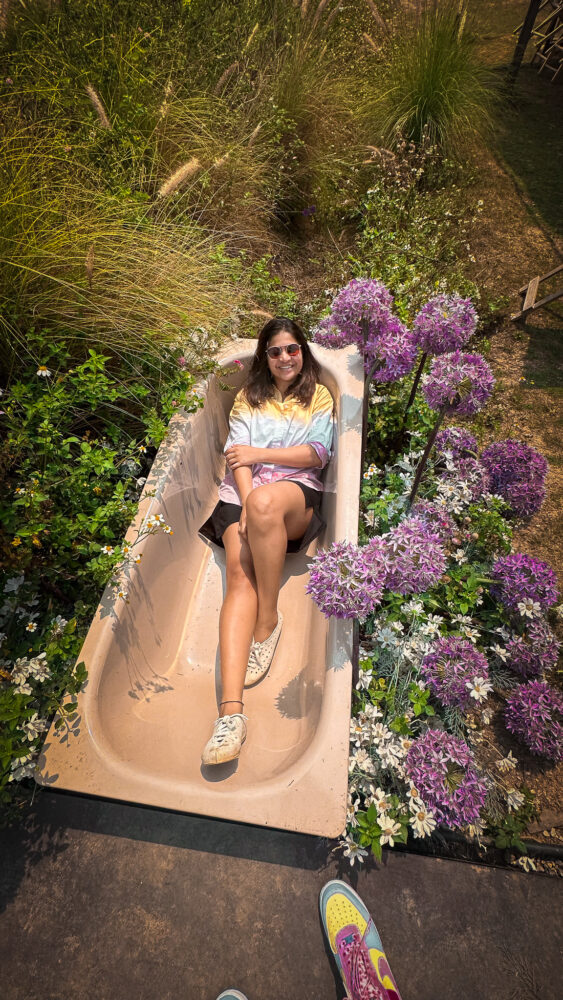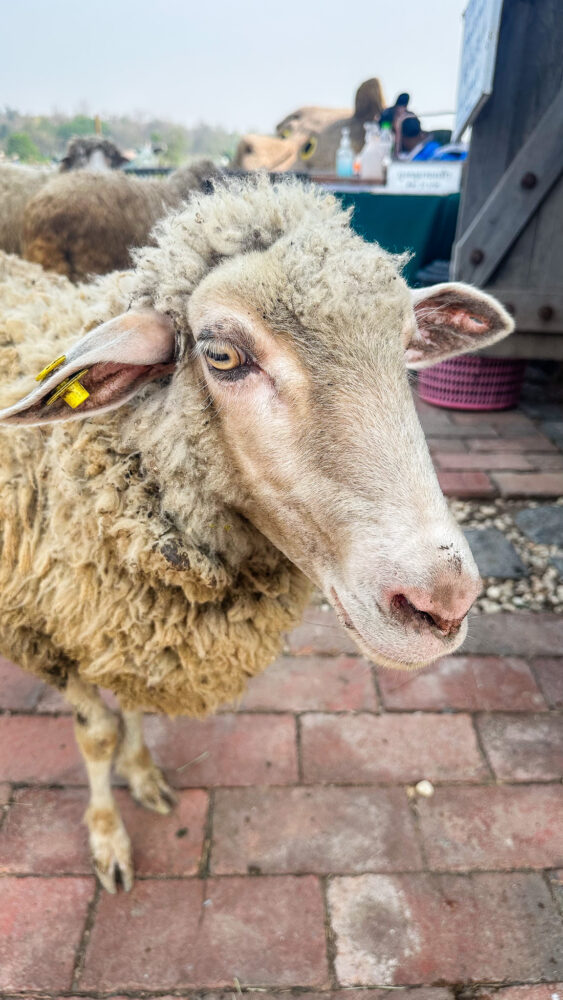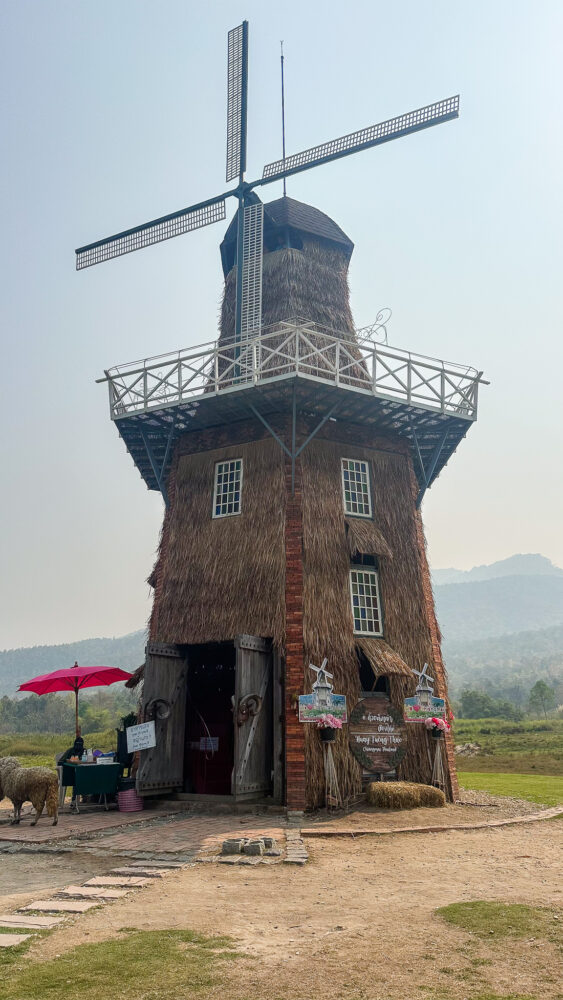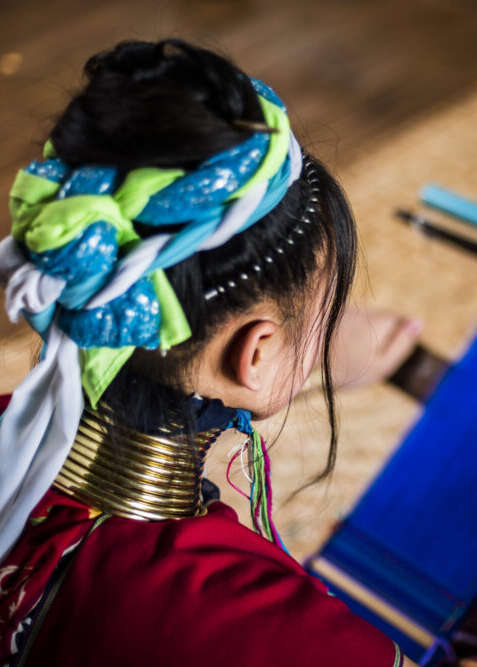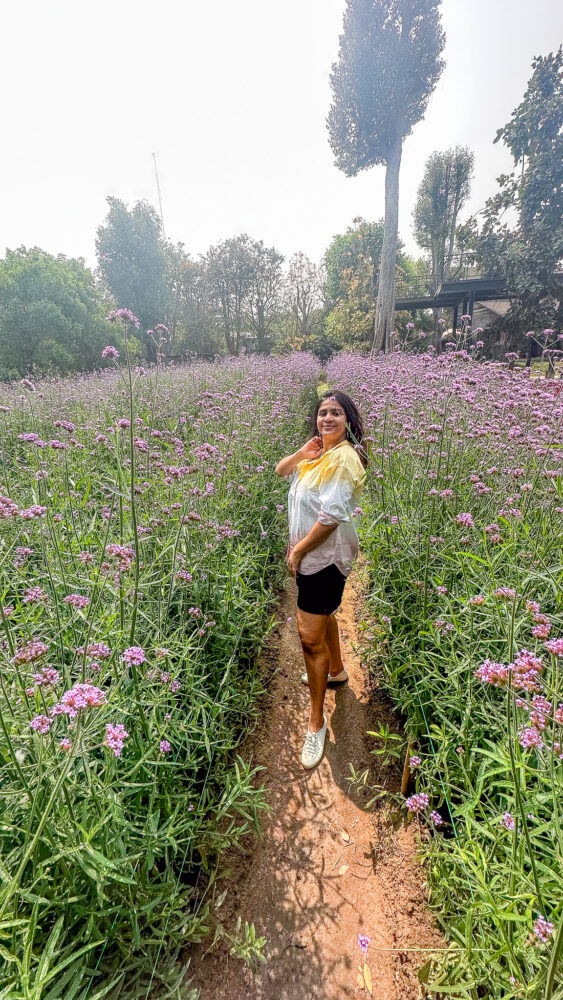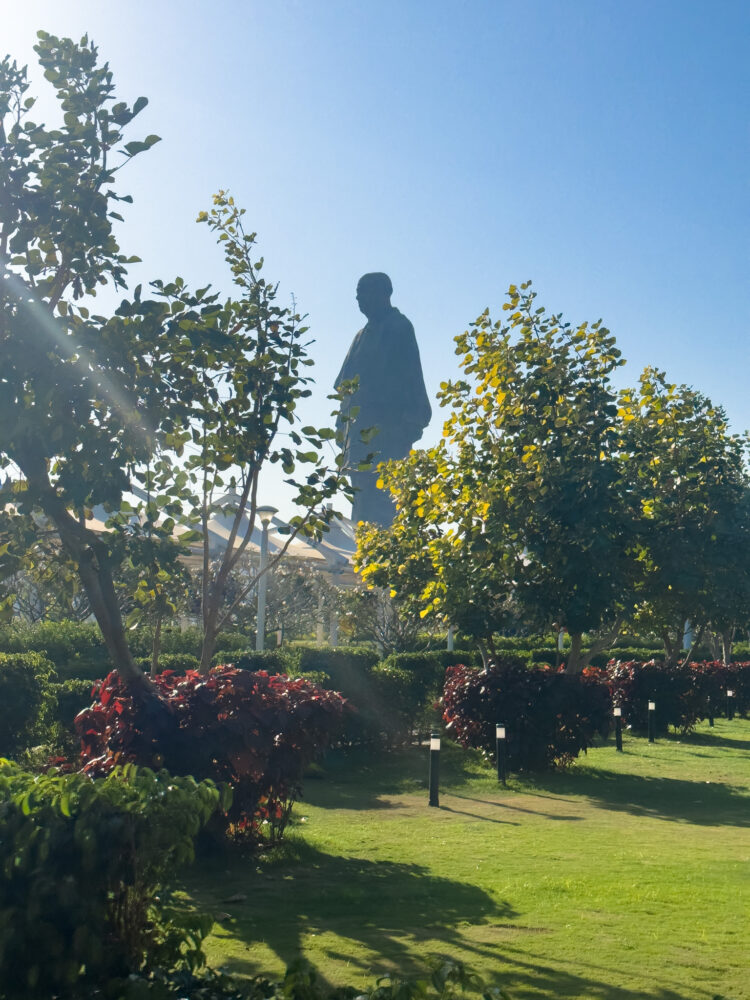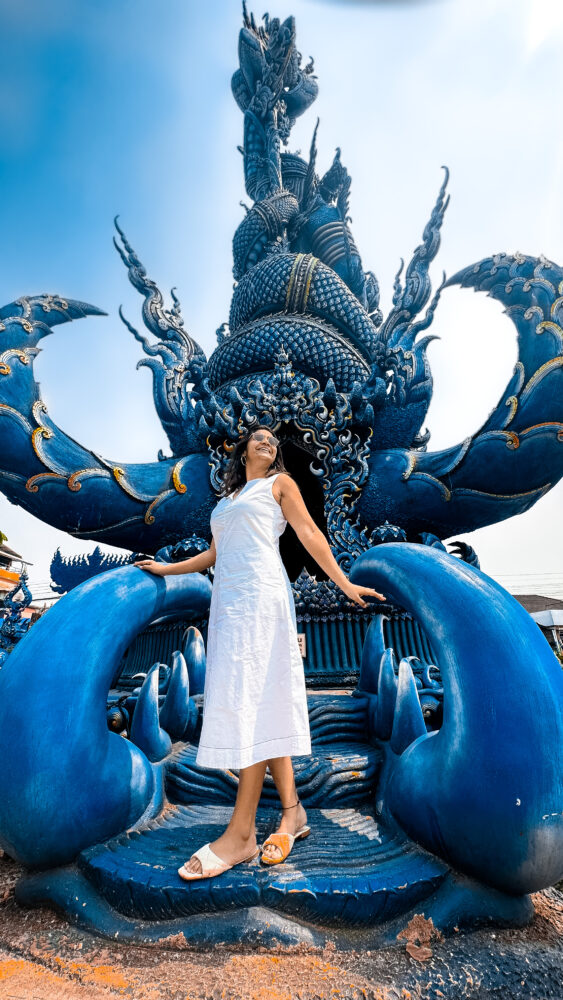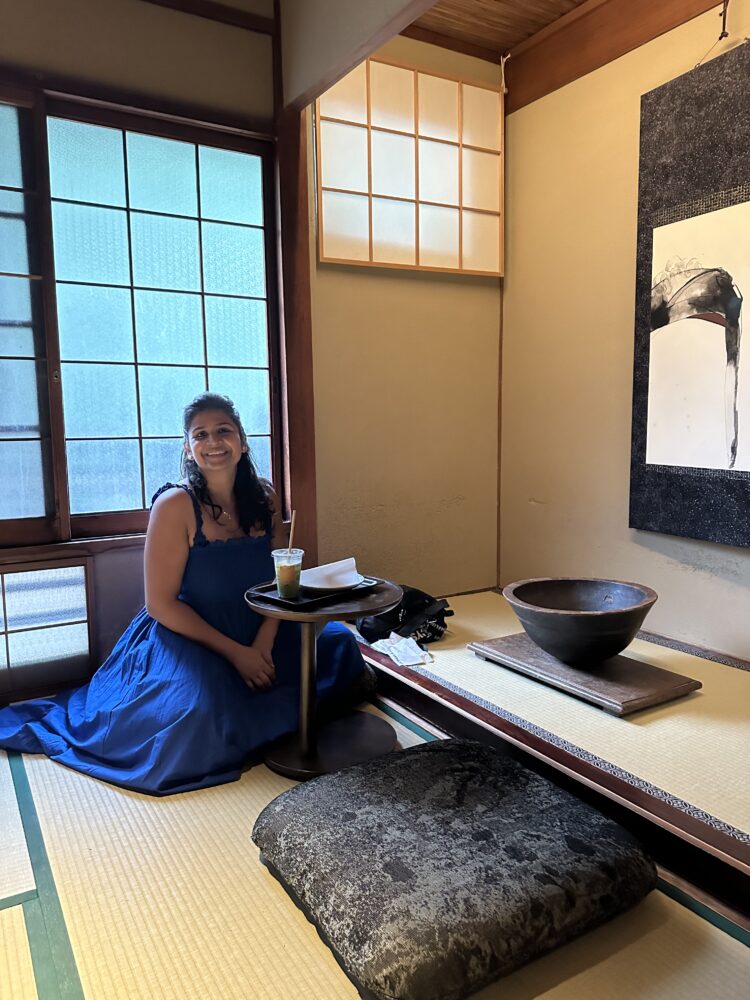Chiang Mai’s Hidden Gems: Off-the-Beaten-Path Attractions Worth Visiting
Chiang Mai, with its ancient temples, bustling markets, and rich cultural heritage, is a popular destination for travelers seeking authentic experiences in Thailand. While exploring the well-known attractions is a must, there are also numerous off-the-beaten-path gems waiting to be discovered. In this blog, we will unveil some lesser-known yet fascinating places/things to do in Chiang Mai that offer unique experiences and a deeper connection to the local culture. Chiang Mai itinerary planning should definitely include these hidden wonders, allowing you to embark on an exciting journey and explore the captivating city beyond its mainstream attractions. Get ready to discover the unique charm and hidden wonders of this captivating city.
Table of Contents
Wat Sakithaka or Wat Pha Lat
Nestled along the Monk’s Trail, Wat Pha Lat is a hidden gem that offers stunning views and an aura of serenity. The temple’s cascading tiered structures blend harmoniously with the natural surroundings, creating a mystical atmosphere. Hike through the forest trail to reach this lesser-known temple and savor its peaceful ambiance and add it on your things to do in Chiang Mai list.

To get to Wat Pha Lat, you have a couple of options. You can take a taxi directly to the temple. Alternatively, if you catch a songteaw from the city to Wat Phra Tat Doi Suthep, you can request the driver to stop at Wat Pha Lat on the way. This lesser-known temple is worth a visit, as it offers a serene and less crowded atmosphere compared to the popular Wat Phra Tat Doi Suthep.
For a more adventurous experience, you can opt for a short trekking journey to Wat Pha Lat along the famous “monk’s trail.” The trail is named after the orange cloths tied around the trees by monks, marking blessed plants. This traditional practice ensures that the environment is protected, as these trees are considered sacred and cannot be cut.
Finding the entrance to the trekking trail to Wat Pha Lat might be a bit tricky, as it is not prominently marked. To start the trek, head to the end of Suthep Road and make a right turn at DCondo. If you’re traveling by scooter, you can park it here and begin your trekking adventure to Wat Pha Lat. Alternatively, you can drive a bit further, and if you’re using a taxi, you might need to get off at this point. Look for a small sign that says ‘nature trail Pha Lad’ at the turn.
Once you’ve found the trail entrance, proceed straight for approximately 250 meters until you reach a small intersection. Take a left turn here, and after walking around 800 meters, you’ll arrive at the entrance to the Wat Pha Lat trekking trail.
The trek itself is not very challenging, and I believe that most people can comfortably complete it. It typically takes around 30 to 40 minutes to reach the temple. The trail offers a pleasant and enjoyable walk through nature, making it accessible to a wide range of travelers. Upon reaching Wat Pha Lat, you’ll be rewarded with a peaceful and serene temple nestled in the forest, providing a refreshing escape from the city’s hustle and bustle.
For those seeking to extend their journey, Wat Pha Lat serves as a great starting point to continue on to Wat Phra That Doi Suthep, another renowned temple with spectacular panoramic views of Chiang Mai. Embrace the beauty of the trekking trail and immerse yourself in the tranquility of these hidden gems as you explore the cultural and natural wonders of this enchanting city. Do not miss to add this in your things to do in Chiang Mai list.
Huay Tung Tao Lake
Escape the city’s hustle and bustle at Huay Tung Tao Lake, a serene reservoir just a short drive and a must things to do in Chiang Mai. The picturesque surroundings, with the backdrop of Doi Suthep Mountain, make it an idyllic spot for a relaxing day by the water. Enjoy a leisurely boat ride, indulge in delicious local food at the lakeside huts, or simply unwind amidst the natural beauty.
Huay Tung Tao Lake is a serene and picturesque reservoir located just a short distance from Chiang Mai city center, making it a popular destination for both locals and tourists alike.
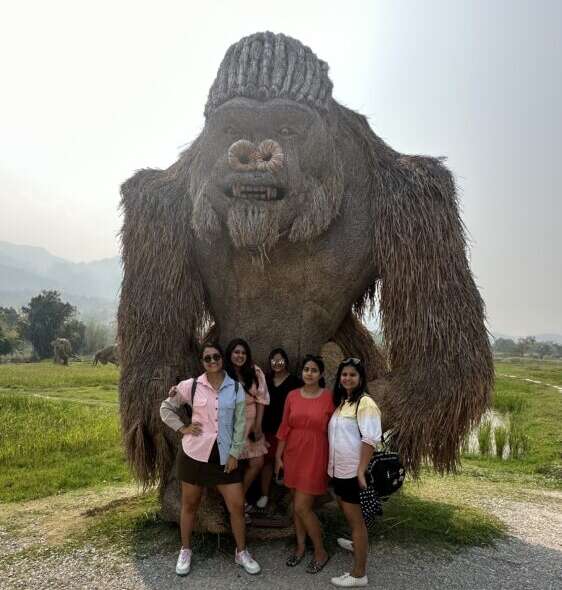
The lake is usually open daily from around 8:00 AM to 6:00 PM. However, it’s always a good idea to check the specific timings before visiting, as they may vary depending on the season or special events. Huay Tung Tao Lake is situated approximately 12 kilometers (about 7.5 miles) north of the Chiang Mai Old City. It’s easily accessible by car, motorbike, or taxi, and the journey typically takes around 20 to 30 minutes, depending on the traffic.
Huay Tung Tao Lake has a small entrance fee, which is usually around 50 to 100 Baht per person for adults. The rental fees for huts, bamboo mats, boats, and fishing equipment are separate and can vary depending on the duration of use.
- Relax by the Lake: Huay Tung Tao Lake offers a peaceful and scenic setting, making it an ideal spot to unwind and enjoy the tranquility of nature. There are plenty of huts and bamboo mats available for rent where you can sit by the water, enjoy the fresh air, and take in the beautiful mountain views.
- Boat Rides: Visitors can rent rowboats or paddle boats to explore the lake at a leisurely pace. It's a fun activity for couples, families, or friends to enjoy together.
- Fishing: Fishing is allowed at Huay Tung Tao Lake, and you can rent fishing equipment on-site if you're interested in trying your luck and catching some fish.
- Picnicking: Many visitors bring along their own food and have a relaxing picnic by the lake. There are also small restaurants and food stalls around the lake where you can enjoy some local snacks and dishes.
- Water Activities: During the dry season, the water level may recede, and some parts of the lake may become shallow, making it a great place for kids to play safely in the water.
Wat Umong
Nestled within the forest, Wat Umong is an ancient temple that offers a unique underground tunnel experience. Wander through the dimly lit tunnels adorned with Buddhist proverbs and experience a sense of tranquility as you meditate at one of the secluded prayer spots scattered throughout the temple grounds. This hidden gem is a must and should be included on your things to do in Chiang Mai.

Wat Umong is known for its “Monk Chat” program, where visitors have the opportunity to engage in conversations with resident monks. It’s an excellent chance to learn about Buddhism, meditation, and Thai culture directly from the monks themselves. The Monk Chat sessions are usually held during specific hours and are open to anyone interested in deepening their understanding of Buddhism.
Wat Umong is generally open daily from early morning until sunset. There is no entrance fee to visit the temple, but donations are appreciated to support the upkeep of the temple grounds and the resident monks.
Wat Umong is located west of the Chiang Mai Old City, about a 15 to 20-minute drive from the city center. You can reach the temple by taxi, tuk-tuk, or rented motorbike. Some guided tours also include Wat Umong as one of their stops. Do not miss this place in your things to do in Chiang Mai.
Baan Kang Wat
For a taste of Chiang Mai’s contemporary arts and crafts scene, head to Baan Kang Wat. This charming artsy village showcases local artists’ studios, galleries, and boutique shops. Wander through the quaint lanes, admire unique handicrafts, and sip on locally brewed coffee at a cozy café. Baan Kang Wat offers a creative and offbeat experience away from the usual tourist haunts. Not to miss from your things to do in Chiang Mai.

This charming community has gained popularity for its creative and artistic atmosphere, making it a hidden gem worth exploring. Here are more details about Baan Kang Wat:
Baan Kang Wat is a haven for artists, craftsmen, and creative individuals. The village is home to numerous studios, galleries, and workshops where local artists showcase their unique creations. Visitors have the opportunity to witness the creative process and interact with the artists, gaining insights into their techniques and inspirations.
The village is a hub for various artisanal crafts, including pottery, woodworking, textiles, and more. Each shop and studio offers a diverse range of handcrafted items, making Baan Kang Wat an ideal place to find unique souvenirs and gifts to take home.
Baan Kang Wat features several charming cafés and eateries that boast a laid-back and bohemian ambiance. These cafés are perfect spots to relax, enjoy a cup of locally brewed coffee, and savor delicious homemade treats. Many of them are set within lovely gardens and outdoor spaces, providing a delightful place to unwind and soak in the creative energy of the village.
Throughout the year, Baan Kang Wat hosts various art exhibitions, workshops, and events, further enriching the artistic and cultural experiences for both locals and visitors. These events showcase the talents of the village’s creative community and offer opportunities for visitors to engage with the local arts scen
For those interested in immersing themselves in the artistic process, some studios in Baan Kang Wat offer creative workshops. These workshops allow participants to learn traditional crafts or artistic techniques from skilled local artisans, making it a memorable and hands-on experience.
Baan Kang Wat is set amidst lush greenery, with beautiful gardens and natural surroundings adding to its tranquil and bohemian atmosphere. The village’s commitment to preserving the natural environment aligns with its focus on sustainable living and creativity in harmony with nature.
Baan Kang Wat is easily accessible by car, motorbike, or taxi from the Chiang Mai city center. The journey usually takes around 20 to 30 minutes, depending on the traffic. It’s recommended to check the opening hours of the studios and cafés you wish to visit, as they may vary.
Baan Kang Wat offers a refreshing and artistic escape from the bustling city, providing a unique blend of creativity, craftsmanship, and natural beauty. Whether you’re an art enthusiast, a curious traveler, or simply seeking a relaxing and inspiring atmosphere, a visit to Baan Kang Wat promises an enchanting experience filled with artistic discoveries and creative inspiration. It tops on the things to do in Chiang Mai recommendation list.
Mae Sa Waterfall
Venture outside the city to explore the picturesque Mae Sa Waterfall a must in your things to do in Chiang Mai list. The multi-tiered cascades surrounded by lush greenery provide a refreshing escape into nature. Take a leisurely hike along the trail to enjoy the serene beauty and dip your feet in the cool, crystal-clear waters. Mae Sa Waterfall is a stunning natural attraction located approximately 25 kilometers (about 16 miles) northwest of Chiang Mai city in northern Thailand.

This enchanting waterfall is part of the Doi Suthep-Pui National Park and is a popular destination for nature lovers and outdoor enthusiasts.
The best time to visit Mae Sa Waterfall is during the rainy season, which typically spans from June to October. During this time, the waterfall flows with greater intensity, creating a more spectacular sight. However, it’s essential to check local weather conditions before visiting, as heavy rainfall can result in temporary closures or difficult hiking conditions.
There is an entrance fee to access the national park, which includes Mae Sa Waterfall. The fee for foreigners is usually higher than for Thai nationals. The park is generally open daily from early morning to late afternoon, but the exact opening hours may vary seasonally.
Mae Sa Waterfall is easily accessible by car, motorbike, or taxi from Chiang Mai city. The journey typically takes around 30 to 45 minutes, depending on traffic and road conditions.
Please note that while visiting Mae Sa Waterfall, it’s essential to respect the natural environment and follow park rules and regulations to preserve the beauty and ecological balance of this pristine natural wonder.
Mae Sa Waterfall offers a delightful escape into nature, allowing visitors to revel in the splendor of the Thai wilderness. Whether you’re seeking adventure, relaxation, or simply a memorable day amidst nature’s beauty, a visit to Mae Sa Waterfall promises an enchanting experience that will leave you with cherished memories of Chiang Mai’s natural treasures. Do not forget to add it on your things to do in Chiang Mai list.
Doi Inthanon National Park - Karen Hill Tribe Village:
Venture to Doi Inthanon National Park and discover the Karen Hill Tribe Village. Interact with the friendly locals, learn about their unique culture and traditions, and support their traditional handicrafts. The experience provides valuable insights into the lives of the Karen community and their harmonious coexistence with nature.
Located about 60 kilometers (approximately 37 miles) southwest of Chiang Mai, is Thailand’s highest peak and a renowned natural wonder. Within the park, you can visit a Karen Hill Tribe Village, offering an authentic cultural experience. It is one of the top ranked things to do in Chiang Mai.

Doi Inthanon National Park
Scenic Beauty: The park boasts breathtaking landscapes, with lush forests, cascading waterfalls, and terraced rice paddies. Its higher elevations provide cooler temperatures, making it a refreshing retreat from the city’s heat.
Doi Inthanon Summit: The main attraction is Doi Inthanon’s summit, also known as “The Roof of Thailand,” standing at an impressive 2,565 meters (8,415 feet) above sea level. The summit offers stunning panoramic views, especially during the cooler months when misty clouds often engulf the area.
Nature Trails: The national park has several well-marked nature trails that allow visitors to explore the rich biodiversity of the region. Some trails lead to picturesque waterfalls, such as Mae Klang Waterfall and Wachirathan Waterfall.
Karen Hill Tribe Village
Karen Ethnic Group: The Karen Hill Tribe is an ethnic group known for their distinctive traditional clothing, language, and customs. Visiting their village provides an opportunity to learn about their way of life and cultural heritage.
Community Interaction: In the village, you can interact with the Karen people, who are known for their warm hospitality. Engaging with the locals allows you to gain insights into their daily routines, handicrafts, and traditional practices.
Handicrafts and Souvenirs: The Karen Hill Tribe is renowned for their skilled craftsmanship, particularly in weaving. Visitors can purchase traditional handicrafts and textiles, which make for meaningful souvenirs.
Sustainability and Responsible Tourism: Many Karen Hill Tribe villages emphasize sustainable and responsible tourism practices to preserve their culture and natural surroundings. Tourism income often contributes to community development projects and initiatives.
Doi Inthanon National Park and the Karen Hill Tribe Village are accessible by car, motorbike, or organized tours. The journey from Chiang Mai city center takes approximately 1.5 to 2 hours, depending on traffic and stops along the way.
There is an entrance fee to access Doi Inthanon National Park. The fee for foreign visitors is usually higher than for Thai nationals. Additionally, there might be a separate fee or donation requested to visit the Karen Hill Tribe Village 300 THB for Adults (50 THB).
Doi Inthanon National Park Entrance Fee per person is 300 THB for Adults (50 THB), 150 THB for Children (20 THB). For the vehicle entrance fee, it is 30 THB for one car and 20 THB for one motorcycle.
Tips
Dress Respectfully: When visiting the Karen Hill Tribe Village, it’s essential to dress modestly and respectfully to honor the local customs and traditions.
Engage Responsibly: Interact with the villagers in a sensitive and respectful manner, seeking permission before taking photographs or participating in cultural activities.
Wiang Kum Kam Ancient City
Step back in time at Wiang Kum Kam, an ancient lost city located just a few kilometers from the city center. Explore the archaeological ruins of old temples and admire the well-preserved sculptures, offering a glimpse into Chiang Mai’s rich historical past. It is a must things to do in Chiang Mai.
Wiang Kum Kam was established during the 13th century by King Mengrai, the founder of the Lanna Kingdom and Chiang Mai city. It served as the capital of the Lanna Kingdom before it was moved to its current location in Chiang Mai Old City. Due to frequent flooding, Wiang Kum Kam was eventually abandoned and remained hidden for centuries until its rediscovery in the late 19th century.

Highlights of Wiang Kum Kam:
Wat Chedi Liam: This temple boasts an impressive square-shaped chedi with intricate stucco designs. It is one of the most prominent structures in the Wiang Kum Kam complex.
Wat Kan Thom: This temple features a restored viharn (assembly hall) with beautifully carved wooden doors and a serene atmosphere.
Wat Pu Pia: The site contains an ancient monastery with a remarkable underground tunnel leading to an adjacent temple.
Wat E Kang: The temple ruins include an octagonal-shaped chedi and a collection of ancient Buddha images.
Wat Chedi Yot Thong: This temple is known for its unique circular chedi, offering a distinctive architectural style compared to other structures in the area.
The Wiang Kum Kam archaeological site is open to the public and can be explored either by walking or renting bicycles from nearby vendors. There are horse-drawn carriage tours available for those who prefer a more leisurely experience. There is an entrance fee to visit Wiang Kum Kam, which covers access to the archaeological site and its key attractions. The fee is generally affordable, and it helps support the conservation and maintenance of the historical site.
Wiang Kum Kam is located approximately 5 to 6 kilometers (about 3 to 4 miles) south of the Chiang Mai city center. Visitors can reach the site by taxi, tuk-tuk, rented motorbike, or as part of a guided tour.
Chiang Mai’s hidden gems offer a refreshing alternative to the well-trodden tourist path, providing travelers with unforgettable experiences and a deeper understanding of the city’s culture and natural beauty. From serene temples nestled in the forest to secluded lakeside retreats, each off-the-beaten-path attraction showcases a unique facet of Chiang Mai’s charm and a must to add on your things to do in Chiang Mai list. So, venture beyond the usual tourist hotspots and discover the magic of these lesser-known wonders while creating cherished memories that will last a lifetime. Whether you’re seeking spiritual reflection, artistic inspiration, or a connection with nature, Chiang Mai’s hidden gems are waiting to be explored and cherished. Happy exploring!

